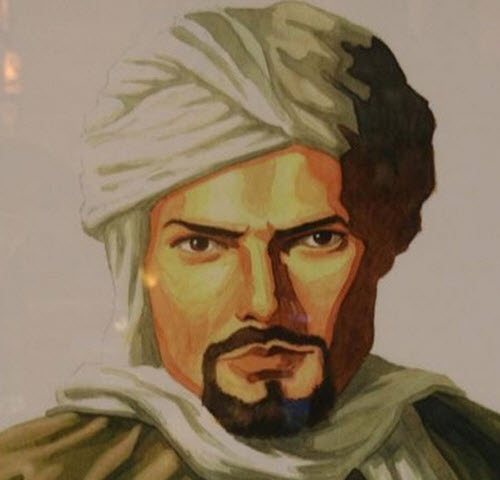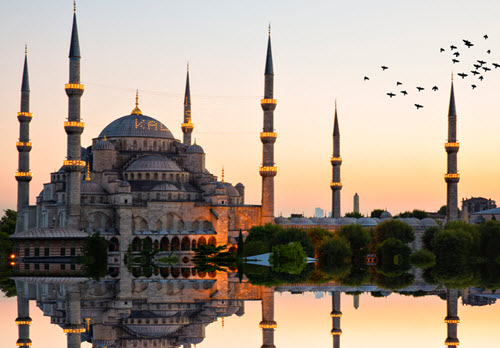Contents
Ibn Battuta was one of the great geographers and explorers of the 14th century and his book “Travels of Ibn Battuta” is a treasure trove for anyone wishing to know more about Asian trading routes and hubs of this era and the people and cultures that populated and surrounded them.
 During his travels, Battuta visited the lands of every Muslim ruler, and he also experienced non-Muslim lands such as Byzantium, Russia, Ceylon (Sri Lanka) and China first hand. In addition to his overland trips, Battuta made many journeys by ship; chiefly on the Red Sea, the Arabian Sea, the Indian Ocean, and the China Seas.
During his travels, Battuta visited the lands of every Muslim ruler, and he also experienced non-Muslim lands such as Byzantium, Russia, Ceylon (Sri Lanka) and China first hand. In addition to his overland trips, Battuta made many journeys by ship; chiefly on the Red Sea, the Arabian Sea, the Indian Ocean, and the China Seas.
Despite the rich and detailed written account he left as a legacy, Ibn Battuta is largely ignored in modern-day history books in favor of other travel authors such as Marco Polo.
Introduction
Abu Abdullah Muhammad Ibn Battuta, also known as Shams ad -Din, was born in Tangier on 24 February 1304.
As a young man, he left Tangier in 1325, embarking on a journey that would keep him out of his native Morocco for roughly three decades.
When he finally returned back home, he settled in Fez and dictated his memories to Ibn Juzay al-Kalbi at the court of Sultan Abu Inan. After three months of work, Juzay had compiled the book “Travels of Ibn Battuta” which was finished on 9 December 1355.
Battuta kept in Fez as his base, but he didn’t give up traveling. Before he died in Fez in 1369, he visited places such as Muslim Spain, and the lands of the Niger on the other side of the Sahara Desert.
Travels
Making hajj – twice
During his first long trip, Ibn Battuta traveled through Algiers, Tunis and Egypt in Northern Africa, and then through Palestine and Syria in the Middle East, to reach Mecca on the Arabian Peninsula. After Mecca he visited Iraq, Shiraz in Iran, and Mesopotamia, before going back to Mecca to carry out the hajj – a pilgrimage to Kaaba, the “House of God”, in Mecca.
Battuta stayed in Mecca for three years, before embarking in a new journey. Now, he traveled to the port city Jeddah from which he went to Yeme by sea (the Red Sea). He visited Aden and boarded a ship headed for Mombasa, a port town in what we today know as Kenya in Eastern Africa. After traveling north to Kulwa, Battuta proceeded to Oman, Hormuz, Siraf, Bahrain, and Yamama, before carrying out another hajj (in the year 1332 AD).
Going to Constantinople – capital of West Rome
 Now, having done his second hajj, Battuta planned to go to India, but only got to Jeddah before changing his mind. We don’t know why, but he might have encountered problems finding a suitable ship heading for India. Instead of going to India, he revisited Egypt, Palestine and Syria, before going to Anatolia by boat. Battuta travelled across Anatolia and visited Sinope, a city situated on the most northern edge of the Turkish side of the Black Sea coast, in the ancient region of Paphlagonia. After crossing the Black Sea by ship, he journeyed through southern Ukraine to reach Constantinople.
Now, having done his second hajj, Battuta planned to go to India, but only got to Jeddah before changing his mind. We don’t know why, but he might have encountered problems finding a suitable ship heading for India. Instead of going to India, he revisited Egypt, Palestine and Syria, before going to Anatolia by boat. Battuta travelled across Anatolia and visited Sinope, a city situated on the most northern edge of the Turkish side of the Black Sea coast, in the ancient region of Paphlagonia. After crossing the Black Sea by ship, he journeyed through southern Ukraine to reach Constantinople.
Going to India
Evidently, Battuta had not given up on his ambition to visit India – and this time he traveled overland instead of trying to find a ship. After Constantinople, he journeyed through Khiva and visited notable cities such as Bukhara, Balkh, Herat, Tus, and Mashhad, gradually advancing farther and farther east. Mashad is located in Iran’s Razavi Khorasan Province, near the current borders to Turkmenistan and Afghanistan.
When it became time to cross the mountain range Hindu Kush, Battuta opted for the route that goes through the Khawak Pass at 13,000 ft above sea level (an altitude of nearly 4,000 meters). The Hindu Kush, known to the Ancient Greek as Caucasus Indicus, is a mountain range that forms the western section of the Hindu Kush Himalayan Region, creating a border between the Ama Darya valley in the north and the Indus River valley in the south.
After getting into Afghanistan, Battuta went through Ghani and Kabul, and then finally reached India’s northern border. Examples of places that he visited in India are Lahri / Karachi, Sukkur, Multan, Sirsa, Hansi and Dehli.
In India, Battuta was well received by the Sultan Mohamma Tughlaq and enjoyed the sultan’s patronage for several years.
Going to China
Eventually, Sultan Mohammad Tughlaq made Battuta his envoy and dispatched him to China. Battuta went travelled through Central India to get to Cambay in Gujarat in western Indian. At the Gulf of Cambay, he arranged ship transport to Goa. From Goa, which is also located in western India but much farther south than Cambay, he continued by ship.
Battuta did not sail directly from Goa to China. On the contrary, he visited several ports before even leaving the Malabar coast. He then got to the Maldive Islands, and from there traveled on to the island Ceylon (Sri Lanka).
Examples of other places where Battuta stopped along his slow journey to China are Ma’bar, Kamrup, Sylhet, Sonargaon, Sumatra, Malaya, and Cambodia.
Finally, Batutta landed in Canton. Canton, also known as Guangzhou, is a city located on the Pearl River in southern China. It has a long history of being a major port and trading hub, and used to be very important for the maritime Silk Trade.
In China, Batutta headed north to reach Beijing, passing through Hangchow on the way.
Going back to Mecca
After his visit to China, Batutta returned to India by ship.
From Calicut (Kozhikode) in Kerala on India’s western coast, he sailed to Muscat, an Arabian Peninsula port city in Oman. He then passed through places such as Iran, Iraq, Syria, Palestine and Egypt, before making yet another pilgrimage to Mecca in November 1348.
After Mecca, Batutta returned to Morocco, where he settled in the city of Fez in the mid 1350s.
Later travels
Batutta kept Fez as his base, but he did continue to travel to exotic places, such as Muslim Spain in Europe and the lands of the Niger on the other side of the Sahara Desert in Africa.
He died in Fez in 1369.